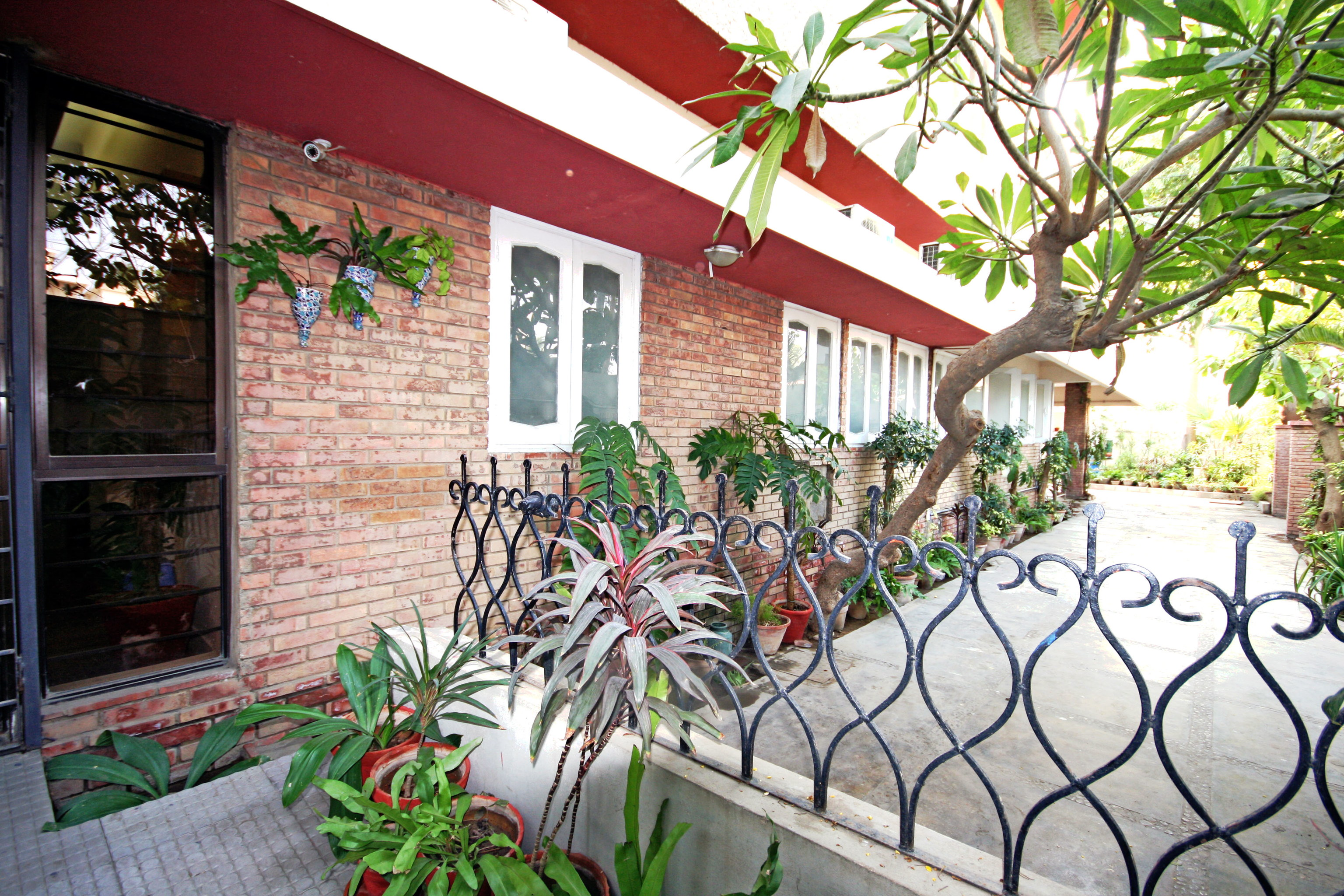You are here
If I had a choice, would I chose Karachi?
 A little more than five years ago, my sister Shaheen, who lives in New Jersey, and I decided to start a psychiatric rehabilitation center in Karachi, Pakistan. Considering that we both lived in the US, and considering that Karachi at that time was one of the most dangerous cities in the world, it was not a choice based on suitability. Our choice was purely driven by the fact that we had a sister and a brother, who since their teenage years, had suffered from mental illness. They both lived in Karachi. It was not that we wanted a place for them. It was just that we wanted to pass on knowledge to other families with a similar background—what we learned over 50 years of being involved with them as caregivers.
A little more than five years ago, my sister Shaheen, who lives in New Jersey, and I decided to start a psychiatric rehabilitation center in Karachi, Pakistan. Considering that we both lived in the US, and considering that Karachi at that time was one of the most dangerous cities in the world, it was not a choice based on suitability. Our choice was purely driven by the fact that we had a sister and a brother, who since their teenage years, had suffered from mental illness. They both lived in Karachi. It was not that we wanted a place for them. It was just that we wanted to pass on knowledge to other families with a similar background—what we learned over 50 years of being involved with them as caregivers.
Karachi, and many other parts of the world, could greatly benefit from a true psych rehab center but, between the two us, we had only enough energy to start one up and create a model for others to follow somehow. In the coming years, we believe Karachi needs hundreds of such facilities or centers.
The Importance of Leadership and Vision
 The Recovery House, a 15-bed, residential-cum-day program psychiatric rehabilitation center based in Karachi, Pakistan, is run from the US by two people, its founders. These people are its regulators; they provide all the training, it is their vision, and they are involved in the hiring of each and every individual. The majority of fundraising is done entirely in Pakistan by these two. There are local Trustees and regular Trustee meetings, and it is the intention of the founders to delegate everything to the Trustees. The local Trustees were very helpful in the initial stages when one of them lent his house so that we could have a place to start the center. Subsequently, when we had to move, they were able to identify the right location, moving heaven and earth to bring the location into shape by renovating it.
The Recovery House, a 15-bed, residential-cum-day program psychiatric rehabilitation center based in Karachi, Pakistan, is run from the US by two people, its founders. These people are its regulators; they provide all the training, it is their vision, and they are involved in the hiring of each and every individual. The majority of fundraising is done entirely in Pakistan by these two. There are local Trustees and regular Trustee meetings, and it is the intention of the founders to delegate everything to the Trustees. The local Trustees were very helpful in the initial stages when one of them lent his house so that we could have a place to start the center. Subsequently, when we had to move, they were able to identify the right location, moving heaven and earth to bring the location into shape by renovating it.
A full-time director is available to run the facility on a day-to-day basis. This is a position that has not been easy to fill. There has been some turnover in the position because it has not been possible so far to identify a candidate who has leadership, competence and the willingness to learn the business.
Challenges and Virtues of Culture and Religion.
What we did not fully appreciate at that time (although we had some idea) was that apart from the political climate, we were going to operate in an environment where the culture of stigma as relates to a mental issues would become a big hurdle to overcome. We also knew, but did not fully appreciate, that a very large number of the population was fairly religious and that their religious conditioning led them to believe that healing could come through recitation of holy verses, the drinking of water blessed by priests or straightforward exorcisms. The other side of this coin was that families were close knit and more than willing to give support to any family member who was afflicted, provided they were given guidance and they trusted the person given the guidance.
Challenges and Virtues of Lack of Government Support and Involvement
In setting up our NGO, we soon discovered that dealing with mental illness was not a high priority with the government . The law on the books was last promulgated by the British and it was called the Lunacy Act of 1912. This was replaced in 2001 by the Mental Health Ordinance of Pakistan. One of the main benefits of this was to change the perception of mental Illness by replacing the word “lunacy” by the words “mental disorder”. It had taken society 88 years to officially recognize this and pass a law. There still remains a huge amount of work to be done in regulating how mental illness can be treated in the country.
In some ways this is seen by me as an advantage as we are involved in pioneering work which very few, if any, would understand in the government machinery. In fact, to the extent that we have become familiar with the regulatory framework in the US, we have concluded that it is not always in the best interest of the consumer.
We expect to set up our own standards which we are borrowing from the US and UK and we would have to take responsibility for whatever we came up with. In some ways we would be both delivering services as well as being regulators. I feel it to be an advantage, where the government is almost expecting the private sector to take the lead in a subject which it has little or no knowledge and which does not fall into its areas of priority.
Challenges of Poverty and Overpopulation
 Karachi has a population of over 20 million people and as such, it is one of the largest cities in the world. It is also responsible for serving an area covering an area way beyond its borders. Every day thousands of people come to the city to receive specialized services not available in their towns or villages.
Karachi has a population of over 20 million people and as such, it is one of the largest cities in the world. It is also responsible for serving an area covering an area way beyond its borders. Every day thousands of people come to the city to receive specialized services not available in their towns or villages.
We knew that whatever we did, once the education and awareness had been imparted, our effort would be like a drop in the ocean of need for such services. We had to be very careful not to get confused with the needs of the teeming masses so that we did not lose focus on setting up the right infrastructure. Having limited financial resources and armed with nothing but our own vision and experience, we could only start small and build from the ground up.
Challenges of Lack of Trained Personnel
While the informal sector dealing with mental issues consisted mainly of religion, ignorance, neglect, and the resulting suffering and abuse, the formal sector was mainly in the hands of psychiatrists. According to a WHO AIMS report ( 2005), there are 342 psychiatrists and 478 psychologists in Pakistan. There are 24 psychiatrist beds available for every million people.
The concept of rehabilitation hardly exists and therefore people graduating from universities are educated in psychology but not in rehabilitation. Our initial goal was to hire psychologists and train them in rehabilitation, but we found a greater interest in the psychologists that we hired to implement what they were taught in college rather than to learn something new. There were no candidates available among the nursing staff that had any training or experience of dealing with people suffering from mental illness. We were fortunate to have psychiatrists available who had some sympathy for rehabilitation, but our overall aim was to emphasize the role of counseling, activity and to reduce the role of medicine in rehabilitating affected people. The New York Times published and article in October 2015 stated that after years of study,this is the right approach, especially in treating schizophrenia.
The Gender Issue
Although as many women as men were affected by mental illness, families were less trusting of handing over treatment - particularly residential treatment of their female relatives to others. They were also less inclined to invest money on females than males for treatment whose outcome was less certain. My sister and I were committed from day one to provide services to women as well as men, although some people advised us just to focus on men.
For a long time ( many years) the beds reserved for women remained unoccupied but it never deterred us. It may have taken a few years but the level of increased awareness brought about by holding multiple seminars and education session resulted in giving hope to many families. They began to accept that we knew what we were doing and slowly but surely they started coming. We now have a track record of rehabilitating women as fast as men and sometimes faster. The female wing is separated from the male wing but the activities are conducted jointly and meals are taken jointly. This was another hurdle to cross because conservative families did not wish to mix the sexes and we often lost the opportunity to help a woman because the family felt our environment did not segregate the men and women enough.
Institutionalization Versus Rehabilitation
Time has created its own issues. We came across a lot of families where the parent of the child who has been suffering from mental illness for over thirty years were now in their 70s and 80s and were no longer capable of looking after the sick child at home. Their other children had emigrated to the West or the Middle East and the siblings were now looking to permanently institutionalize their family member.
This was never a part of our agenda of rehabilitation. We were neither an old people home nor a dumping ground for families suffering from the exhaustion of being care givers. It would have been so easy to lose focus because these people were willing to pay any fee for such services. We had to be firm and train staff to be firm in turning away people who had nowhere to go once they were rehabilitated. Unlike in the US, there were no housing services provided by the State and the only place for people to return was to the family.
We have encouraged families to invest in housing for their family member and we have said that we would work on their goals to live independently. This is a whole set of services which are breaking new ground in a society where people with disabilities are not encouraged to live independently.
Mental Health Versus Mental Illness
 More and more research is showing that medicine is just one part of the path to recovery. The focus of the recovery house is to restore mental health through means other than medicine without ignoring the useful role that medicine can play in the recovery.
More and more research is showing that medicine is just one part of the path to recovery. The focus of the recovery house is to restore mental health through means other than medicine without ignoring the useful role that medicine can play in the recovery.
Mental health comes about through restoring an enabling environment for the affected person who has been subjected to decades of neglect, abuse and intimidation, perhaps unintended but quite common. Mental health comes about through diet, exercise, establishing a routine, meaningful activity and developing realistic goals. These are important for just about anyone but most people are able to work it out for themselves. People suffering from mental illness need help to work these things out and for this they need people who can be gentle, caring, patient and yet persistent.
The methodology we developed at the recovery house believes in restoring mental health while also taking care of the illness. More information about this methodology is available on the website, www.caravanoflifetrust.org,.
The Strengths and Pitfalls of Family Support
The big difference between the environment in the US and Pakistan, and perhaps the US and many traditional societies, is how the family still plays a critical part in the lives of people. From the point of view of mental illness, this is a plus because the family in Pakistan can play a critical role in the rehabilitation of those suffering from mental illness. The recovery house has a policy of dealing only with clients whose families not only stand behind them, but who agree to attend education, counselling and progress sessions on a regular basis. The recovery house sees itself playing an important role in supporting and developing caregivers. In our experience only in some cases is the caregiver a spouse, because the client has suffered since the teen years and either never got married or got married under pressure and the marriage ended very quickly.
In some cases the family suffers from so much exhaustion and stress, that they can be reluctant participants and likely to do more harm than good. The eventual goal of rehabilitation is to promote independent living but the family can play a very important role in encouraging a member who was never before seen as capable of living independently.
Can I Afford It?
Going through the stages of rehabilitation can be time consuming and requires the involvement of many professional disciplines which may result in an expensive series of solutions. Rehabilitation becomes particularly expensive if a prolonged residential stay is part of the recovery process.
The Recovery House has assisted with clients diagnosed with mental illness who have tried a variety of treatments. Some of these clients have may have benefitted from medicine but for a variety of reasons are unable to remain consistent with their medicated treatment.
The reality is that rehabilitation may be more costly than the client is able to afford. Their treatments over the years may prove costly to themselves and their families. Unfortunately, some of these treatment solutions have remained unsustainable or otherwise ineffective for the client.
In our experience, it’s not uncommon for residential stays to last anywhere from three months to a year. We often see cases where multiple discharges and re-admissions occur over the span of years – which then limits the efficiency of their treatment.
The not-for-profit status of the Recovery House provides a financially attainable treatment alternative to commercial solutions are often most costly to the client. At the Recovery house, we aid in identifying donors for clients who are unable to afford or otherwise fund their treatment solutions.

